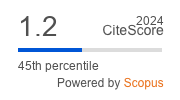Development and validation of a method for quantitative determination of the flavonoid content in the herb of yellow loosestrife (Lysimachia vulgaris L.)
https://doi.org/10.33380/2305-2066-2025-14-4-2026
Abstract
Introduction. The study of the qualitative and quantitative composition of plants and the identification of promising medicinal species is one of the most important tasks of modern pharmacognosy. Yellow loosestrife (Lysimachia vulgaris L.) of the Primulaceae family is a perennial herbaceous plant. The main group of active substances in the herb of L. vulgaris are phenolic compounds. L. vulgaris is widely distributed in Russia, is known in traditional medicine, its biological activities have been examined in vitro and in vivo experiments. A search of scientific literature in the Russian segment did not reveal sufficient information on the quantitative content of biologically active substances.
Aim. Development and validation of an analytical procedure for assessing the quantitative content of flavonoids in the herb of yellow loosestrife (L. vulgaris) in terms of rutin using spectrophotometry.
Materials and methods. The object of the study was alcohol extracts from the aerial part of L. vulgaris, harvested during the flowering period in the Leningrad region. Quantitative determination was carried out by spectrophotometry. The proposed analytical procedure was validated in accordance with the requirements of the State Pharmacopoeia XV in terms of specificity, linearity, range, repeatability (intra-assay precision), precision and accuracy (trueness).
Results and discussion. For the proposed analytical procedure, rutin was proposed as a standard sample. It was found that the maximum extraction of flavonoids from the herb of L. vulgaris is achieved by using a single extraction with 70 % ethyl alcohol for 30 min at a raw material : extractant ratio of 1 : 100 and a raw material grinding of 2–1 mm. A 1 % alcohol solution of aluminum chloride was proposed as a complexing agent, and the complexation conditions were selected (aliquot of aluminum chloride 1 % solution 2 ml, complexation time 30 min). The analytical procedure meets the requirements of the validation characteristics. According to the developed method, it was found that the amount of flavonoids in the herb of L. vulgaris, harvested in the Leningrad region, is 2,97 ± 0,05 % expressed in rutin.
Conclusion. A method for the quantitative determination of the flavonoid content in the herb of yellow loosestrife (L. vulgaris) by spectrophotometry expressed in rutin has been developed and validated.
About the Authors
E. M. KripakRussian Federation
14A, Prof. Popova str., Saint-Petersburg, 197022
E. V. Zhokhova
Russian Federation
14A, Prof. Popova str., Saint-Petersburg, 197022
References
1. Podolak I., Strzałka M. Qualitative and quantitative LC profile of embelin and rapanone in selected Lysimachia species. Chromatographia. 2008;67(5–6):471–475. DOI: 10.1365/s10337-007-0511-4.
2. Podolak I., Elas M., Cieszka K. In vitro antifungal and cytotoxic activity of triterpene saponosides and quinoid pigments from Lysimachia vulgaris L. Phytotherapy Research. 1998;12:70–73.
3. Yildirim A. B., Guner B., Karakas F. P., Turker A. U. Evaluation of antibacterial, antitumor, antioxidant activities and phenolic constituents of field-grown and in vitro-grown Lysimachia vulgaris L. African Journal of Traditional, Complementary, and Alternative Medicines. 2017;14(2):177–187. DOI: 10.21010/ajtcam.v14i2.19.
4. Toth A., Riethmüller E., Alberti A., Végh K., Kery A. Comparative phytochemical screening of phenoloids in Lysimachia species. European Chemical Bulletin. 2012;1(1–2):27–30.
5. Toth A., Toth G., Kery A. Polyphenol composition and antioxidant capacity of three Lysimachia species. Natural Product Communications. 2014;9:1473–1478. DOI: 10.1177/1934578X1400901017.
6. Toth A., Riethmuller E., Vegh K., Alberti A., Beni S., Kery A. Contribution of individual flavonoids in Lysimachia species to the antioxidant capacity based on HPLC-DPPH assay. Natural Product Research. 2018;32(17):2058–2061. DOI: 10.1080/14786419.2017.1359176.
7. Yang-Ju S., Jung D. S., Shin J. M., Kim M., Yoo G., Nho C. W. Yellow loosestrife (Lysimachia vulgaris var. davurica) ameliorates liver fibrosis in db/db mice with methionine- and choline-deficient diet-induced nonalcoholic steatohepatitis. BMC Complementary Medicine and Therapies. 2021;21(1):44. DOI: 10.1186/s12906-021-03212-6.
8. Kim S. Y., Lee J. Y., Jhin C., Shin J. M., Kim M., Ahn H. R., Yoo G., Son Y. J., Jung S. H., Nho C. W. Reduction of Hepatic Lipogenesis by Loliolide and Pinoresinol from Lysimachia vulgaris via Degrading Liver X Receptors. Journal of Agricultural and Food Chemistry. 2019;67(45):12419–12427. DOI: 10.1021/acs.jafc.9b01488.
9. Kim H.-Y., Kim C.-E., Oh D.-R., Kim Y., Choi C.-Y., Kim J. Development and Validation of a High-Performance Liquid Chromatography Method to Quantify Marker Compounds in Lysimachia vulgaris var. davurica and Its Effects in Diarrhea-Predominant Irritable Bowel Syndrome. Molecules. 2024;29(7):1489. DOI: 10.3390/molecules29071489.
10. Nurcholis W., Sya'bani Putri D. N., Husnawati H., Aisyah S. I., Priosoeryanto B. P. Total flavonoid content and antioxidant activity of ethanol and ethyl acetate extracts from accessions of Amomum compactum fruits. Annals of Agricultural Sciences. 2021;66(1):58-62. DOI: 10.1016/j.aoas.2021.04.001.
11. Zeb A., Rahman F. Phenolic profile, total bioactive contents, and antioxidant activity of pear fruits. Food Chemistry Advances. 2024;5:100780. DOI: 10.1016/j.focha.2024.100780.
12. Maache S., Elghouizi A., Zbadi L., Soulo N., Nouioura G., Lyoussi B., Elarabi I. Characterization, antioxidant, and antimicrobial activity of two sage species’ organic and aqueous extracts from Morocco’s Middle Atlas. Kuwait Journal of Science. 2025;52(2):100382. DOI: 10.1016/j.kjs.2025.100382.
13. Imtiaz F., Ahmed D., Mohammed O. A., Younas U., Iqbal M. Optimized recovery of phenolic and flavonoid compounds from medicinal plant extracts for enhanced antioxidant activity: A mixture design approach. Results in Chemistry. 2025;13:101960. DOI: 10.1016/j.rechem.2024.101960.
14. de Almeida Soares L., Germano A. T., Vitali L., Mazzuti S., Lins de Aquino Santana L. C. Solid-state fermentation as a pre-treatment method for the extraction of bioactive compounds from pomegranate (Punica granatum L.) and jatobá peel (Hymenaea courbaril L.). Food Bioscience. 2025;63:105716. DOI: 10.1016/j.fbio.2024.105716.
15. Tseylikman V. E., Lukin A. A. On the effect of oxidative stress on the human body. International Research Journal. 2022;3(117):206–211. (In Russ.) DOI: 10.23670/IRJ.2022.117.3.037.
16. Anikin D. A., Solovyeva I. A., Demko I. V., Sobko E. A., Kraposhina A. Yu, Gordeeva N. V. Free-radical oxidation as a pathogenetic factor of metabolic syndrome. Obesity and metabolism. 2022;19(3):306–316. (In Russ.) DOI: 10.14341/omet12804.
17. Olefir Yu. V., Romanov B. K., Kukes V. G., Sychev D. A., Prokofiev A. B., Parfenova O. K., Sidorov N. G., Aleksandrova T. V. The role of oxidative stress in the pathogenesis of socially significant human diseases and ways of its drug correction. Medical news of North Caucasus. 2021;16(4):450–455. (In Russ.) DOI: 10.14300/mnnc.2021.16109.
18. Sokolova A. Y., Poluyanov A. M., Bardakov A. I., Sologova S. S., Bobkova N. V. Isolation, identification and quantification of flavonoids from the flowers of Staphylea pinnata L. Drug development & registration. 2024;13(2):155–163. (In Russ.) DOI: 10.33380/2305-2066-2024-13-2-1796.
19. Boyarshinov V. D., Zorina E. V. Development of quality control parameters for standardization of herb of the cultivated plant Alchemilla mollis (Buser) Rothm. Drug development & registration. 2022;11(4–1):85–90. (In Russ.) DOI: 10.33380/2305-2066-2022-11-4(1)-85-90.
20. Kutateladze G. R., Fedoseeva L. M. Research in the development and validation of the method of quantitative determination of flavonoids in the Common Sorrel herba, gathered in the Altai territory. Drug development & registration. 2019;8(2):80–86. (In Russ.) DOI: 10.33380/2305-2066-2019-8-2-80-86.
21. Nicolescu A., Bunea C. I., Mocan A. Total flavonoid content revised: An overview of past, present, and future determinations in phytochemical analysis. Analytical Biochemistry. 2025;700:115794. DOI: 10.1016/j.ab.2025.115794.
22. Xujiang Y., Cuimin H., Xianmei X., Zhike L., Yanfen C. Optimisation study on the flavonoid extraction process from Abrus precatorius leaves and the comparison of total flavonoid content by HPLC and UV. Journal of Holistic Integrative Pharmacy. 2023;4(2):119–126. DOI: 10.1016/j.jhip.2023.09.003.
23. Amjad M. S., Talaat A. A., Md Mizanur R., Yousef M. H. Determination of total flavonoid content by aluminum chloride assay: A critical evaluation. LWT. 2021;150:111932. DOI: 10.1016/j.lwt.2021.111932.
24. Bin Mokaizh A. A., Hamid Nour A., Ali G. A. M., Ishmael Ukaegbu C., Faraj Hawege E. Eco-friendly and efficient extraction of phenolic compounds from Commiphora gileadensis bark using microwave-assisted extraction. Journal of Industrial and Engineering Chemistry. 2025;142:321–328. DOI: 10.1016/j.jiec.2024.07.038.
25. Liu Y., Wang R., Hu X., Yu C., Wang Z., Zhang L., Liu S., Li C. Optimization of ultrasonic extraction of bioactive components from Alpiniae oxyphyllae Fructus using response surface methodology. Journal of Applied Research on Medicinal and Aromatic Plants. 2024;41:100557. DOI: 10.1016/j.jarmap.2024.100557.
26. Zulkifli M. Z. A., Benjamin M. A. Z., Mohd Rosdan M. D. E., Saini A., Rusdi N. A., Awang M. A. Optimisation of yield, flavonoids, and antioxidant activity via ultrasound-assisted extraction of bamboo leaves from Dinochloa sublaevigata S. Dransf. (Wadan) in Sabah, Malaysia. Advances in Bamboo Science. 2025;10:100128. DOI: 10.1016/j.bamboo.2025.100128.
27. Rocha G. J. R., Aguiar A. C., Abud C. O. G., Pertuzatti P. B., Sampaio K. A., Paula J. T. Pressurized liquid extraction as a green technique for bioactive compounds recovery from Momordica charantia leaves. Applied Food Research. 2025;5(1):100795. DOI: 10.1016/j.afres.2025.100795.
28. Al Hawat L., Alallan L. Estimation of antioxidant and hypolipidemic activities of extracts of Citrus x aurantium leaves in vitro. Phytomedicine Plus. 2025;5(1):100723. DOI: 10.1016/j.phyplu.2024.100723.
29. Kovaleva N. A., Trineeva O. V., Chuvikova I. V., Slivkin A. I. Development and validation of a procedure for quantitative determination of flavonoids in sea buckthorn leaves by spectrophotometry. Bulletin of the Scientific Centre for Expert Evaluation of Medicinal Products. Regulatory Research and Medicine Evaluation. 2023;13(2):216–226. (In Russ.) DOI: 10.30895/1991-2919-2023-531.
30. Petrosyan H. R., Nigaryan A. A., Hovhannisyan H. A., Soloyan A. M., Vardapetyan V. V., Martiryan A. I. Evaluation of antioxidant activity and heavy metals content in licorice (Glycyrrhiza glabra L.) growing wild in Armenia. Heliyon. 2023;9(11):e22442. DOI: 10.1016/j.heliyon.2023.e22442.
31. State Pharmacopoeia of the Russian Federation XIV edition. Moscow: Ministry of Health of the Russian Federation; 2018. V. 4. (In Russ.)
32. State Pharmacopoeia of the Russian Federation XV edition. Moscow: Ministry of Health of the Russian Federation; 2023. V. 2. (In Russ.)
33. Kryukova S. A. Study of the content of flavonoids in the leavs of the redhean region, growing in the territory of Astrakhan region. Innovative scientific research. 2021;6– 3(8):7–12. (In Russ.) DOI: 10.5281/zenodo.5529051.
34. Benedec D., Hanganu D., Olah. N. K., Mocan A., Vlase L., Raita O., Toma C. C. Comparative Polyphenolic Content and Antioxidant Activities of Two Romanian Lysimachia Species. Revista de Chimie. 2016;67(2):227–231.
Supplementary files
|
|
1. Графический абстракт | |
| Subject | ||
| Type | Исследовательские инструменты | |
View
(1MB)
|
Indexing metadata ▾ | |
Review
For citations:
Kripak E.M., Zhokhova E.V. Development and validation of a method for quantitative determination of the flavonoid content in the herb of yellow loosestrife (Lysimachia vulgaris L.). Drug development & registration. (In Russ.) https://doi.org/10.33380/2305-2066-2025-14-4-2026










































